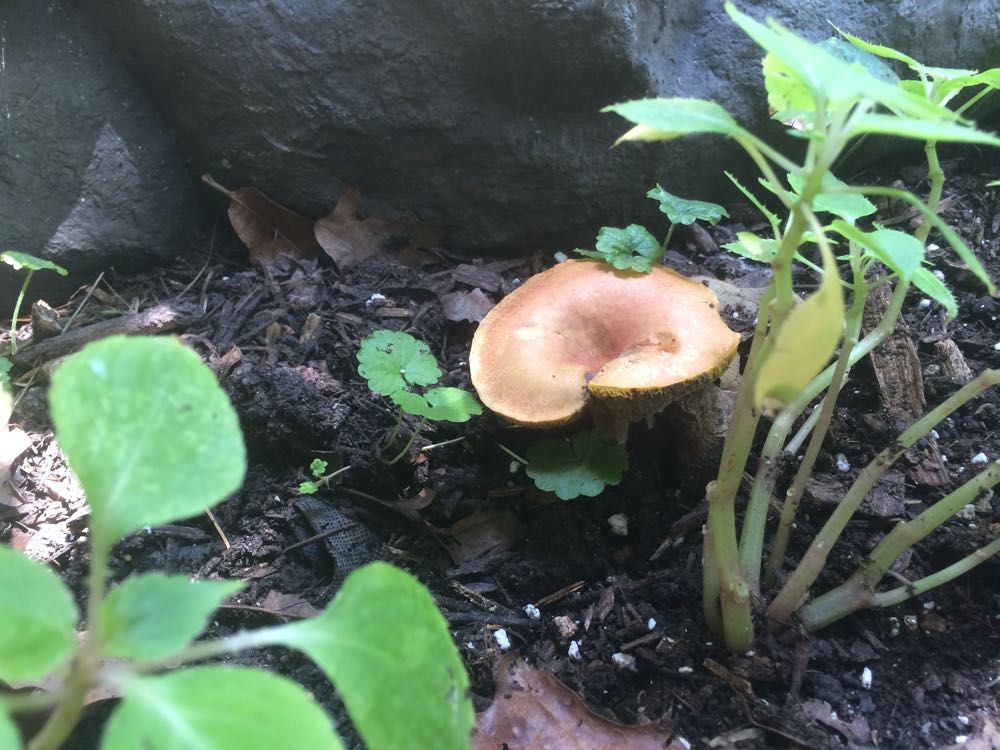More Best Summer Watering Practices
/Summer is a challenging time for gardeners in Missouri, although relaxing inside from record hot temperatures is a welcome relief!
More Best Summer Watering Practices from Bluebird Gardens Quilts and Gifts
Missouri is headed into August 2016 already breaking record hot temperatures so it's hard to imagine how hot our traditionally hottest month of the year will be. Frankly I would rather not even think about it.
July 2016 was punishing enough. There were days when going outside felt like walking into a baking oven. Days after a rain were so humid one would get soaked just standing a few minutes in the shade. Plants would almost immediately wilt after being watered. I tried not to look until evening, when temperatures would break and plants could revive.
To try to help plants survive these conditions, the following are a few more of my best watering practice suggestions, all ones I have tried and found to work:
Cardboard over gravel driveway shows how well cardboard holds water.
Cardboard and Newspaper Mulch
1. Use cardboard or newspaper to mulch. I have tried both and they appear to not only keep the soil moist but they also keep plant roots shaded from the sun. Then when I water, the cardboard in particular seems to hold splashed water and provide some soil moisture a little longer.
I have checked the cardboard a couple of days after it was watered; worms were staying moist right at the gravel surface. Not that I am volunteering my worms but keeping a spot covered in cardboard would be an easy way to get fishing worms. Just saying.
Wet wood chip mulch encourages the growth of mushrooms.
Mulch Garden Beds
2. Mulch garden beds. Dry leaves, pine needles, straw, bark, cardboard all work well to be a protective barrier. You don’t need more than 2-3 inches, the mulch will shade the soil and help hold in moisture. Keep mulch away from tree and plant trunks, a good 6 inches should do, or the mulch will burn the trunks.
With increased watering of mulch, don’t be surprised if you start seeing mushrooms you have never seen before.
Missouri Department of Conservation has a new mushroom identification book, usually available at any conservation department office for less than $10 each.
Deck umbrellas help break searing sun on potted deck plans at Bluebird Gardens.
In Gardening, Throwing Shade is Good
3. If you have tomatoes, peppers and herbs in pots, move them to shade. I also move any plants that seem to be struggling into shade, then check them in the evening to make sure they have moist roots and are recovering.
I also sometimes open my deck umbrella to give my potted plants a break.
Watering is essential but so is time for roots to take in nutrients and send them up plant stems. It can take hours for that process so plants may stay wilted for hours even if you have just watered them. Be patient but keep an eye on them. Double check roots to make sure they are staying moist if you're not sure.
Veggie Watch
4. To some people, only growing vegetables count. Vegetables also need regular, consistent moisture.
Vegetables need an average of one inch of water a week. It is better to water deeply 2-3 times a week but monitor the soil moisture level to make sure they are getting enough.
Once I see this tomato wilting, I know I need to check my potted deck plants for water.
Water Monitoring Plant
5. If you don’t like putting your fingers in soil to test moisture levels, identify a plant that you can easily monitor for wilting. Once you see leaves droop, water.
Now using a tomato plant to gauge moisture levels is not the best idea. Tomatoes prefer even watering. The tomato plant in photo is within easy sight from my den sofa so by default is has become my bellweather plant to remind me to check potted deck plants for water.
I also check other plants for wilting.
Missouri brown-eyed susans in bloom without being watered during record hot temperatures.
Go Native
6. As you plan your garden for next year, buy natives. They are more conditioned to their native soil and have a higher chance of surviving.
Just a reminder, natives also need to be watered in a dearth, maybe not as frequently as non-natives but they still need some soil moisture.
Natives also need to be consistently watered their first year so their roots can be established. natives are low care, not no care.
What have you tried in your garden that has worked well to keep your plants watered?
Charlotte

















